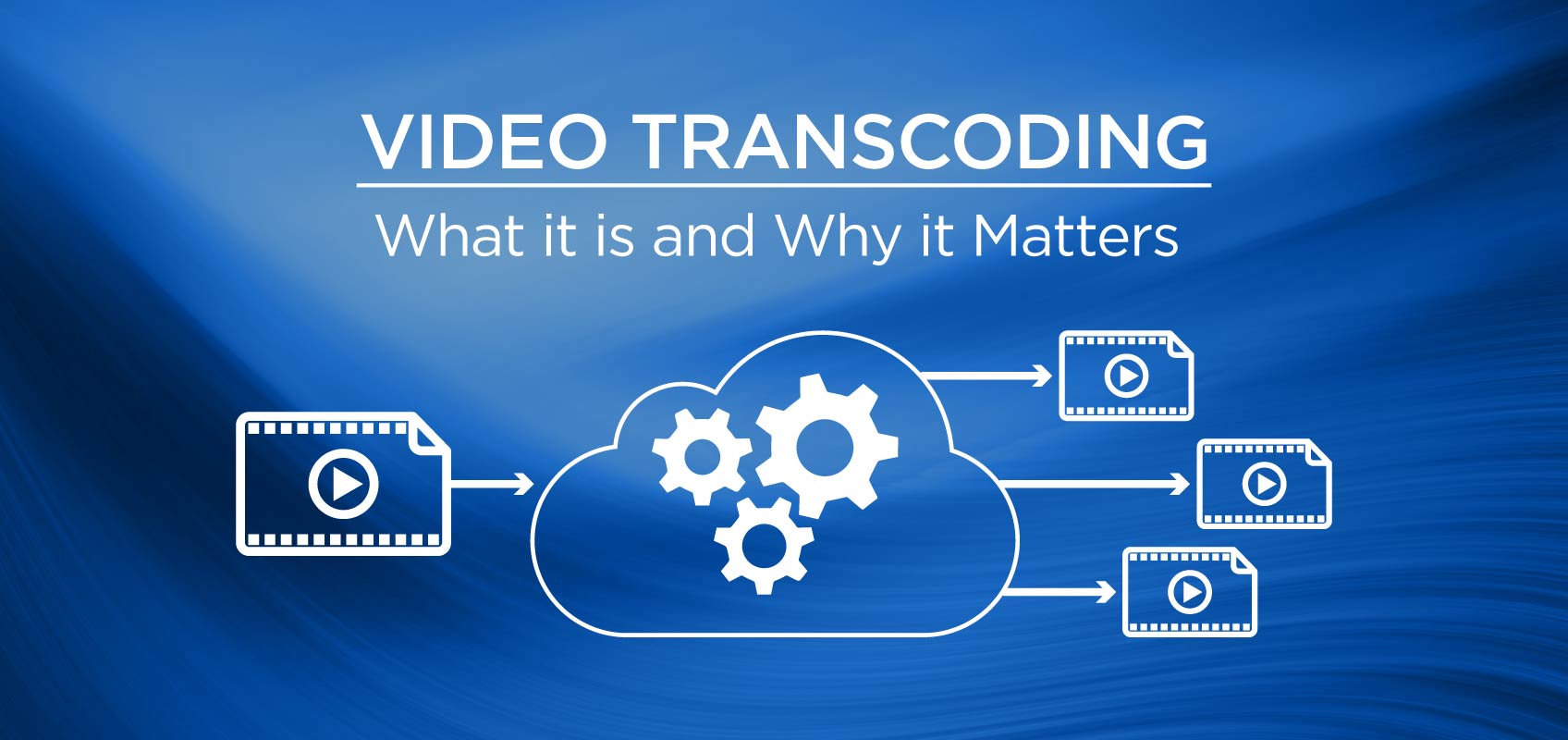What is video transcoding and why does it matter for live video streaming? When it comes to video streaming, we spend a lot of time on the blog explaining some of the basic processes around video encoding and decoding. Today, it’s the turn of another related video process, video transcoding. We’ll explain what it is exactly, why it’s important to streamers, and share examples of when transcoding is useful.
What is Video Transcoding?
In a nutshell, video transcoding describes the process of re-encoding already encoded video for downstream compatibility, bandwidth optimization, and distribution. This usually involves converting from one digital encoding format (codec) to another, such as H.264 to HEVC, for bandwidth optimization or Adaptive Bitrate Streaming (ABR). In some cases, non-compressed video is lightly compressed before being sent to a transcoder, often referred to as mezzanine video. In other cases, a transcoder is simply used to adapt to different types of destinations.
It’s also important to note the difference between file-based transcoding and real-time transcoding. Files are used for prerecorded content such as for video on-demand service (VOD). However, for live video streaming transcoding needs to be applied in real-time and at very low latency in order to keep live video live.
It’s worth noting that there are other processes related to transcoding including transmuxing, transrating, transizing, and framerate conversion.
- Transmuxing (Transcode-Multiplexing): changing the container and delivery format for video and audio without encoding or transcoding the original content.
- Transrating: converting video files to a lower bitrate, this may involve applying more video compression than the originally encoded video.
- Transizing: resizing video to a different output resolution, from 1080p to 720p for example.
- Framerate conversion: adapting video for different framerate standards such as 25/50 to 30/60 fps.
When Does Video Transcoding Matter?
Transcoding is a critical process that enables video to be delivered to the widest range of platforms and devices for viewing at the highest possible quality or when the target device does not support the format that the original data is in. Transcoding also helps users get the most out of available network resources when bandwidth is limited or at a premium.
Video Transcoding Applications
A video transcoder is often used for ABR or Over-the-Top (OTT) use cases where users need to convert a mezzanine stream into different video formats and resolutions. Transcoders are used by OTT services, enterprises that need to transmit video across a network to different types of destination devices. A transcoder is often used after the production stage, taking the video from production and transcoding to different formats to be sent over a Content Delivery Network (CDN) to the end-user devices. Within enterprises, a transcoder can be used to convert streams over a LAN, WAN, or even the public internet to all the different devices and networks the video needs to be adapted for.
Hardware or Software Video Transcoding?
What’s the difference between software and hardware transcoding? It really depends on your application but it’s important to note that transcoding is a computationally-intensive process. Using software encoders relies solely on the CPU of a host computer for processing power which can lead to higher latency and overall lower performance. To maximize transcoding performance for low latency, high quality, and reliability, dedicated hardware appliances can achieve great results. Depending on the application, cloud-based software as a service (SaaS) transcoding can also be an excellent choice as it offers the flexibility of software and the processing power of cloud computing resources.
How Can Haivision Help with Video Transcoding?
For television broadcasters, Haivision Hub offers real-time cloud-based transcoding for bandwidth optimization, downstream H.264 and HEVC codec compatibility, and ABR streaming for CDNs.
For mission-critical video in environments where network bandwidth is limited or unpredictable, such as ISR, situational awareness, and field monitoring applications, Haivision Kraken is a powerful real-time video transcoder that optimizes video networks by transcoding full-motion video for the highest possible quality and ensuring downstream compatibility.

